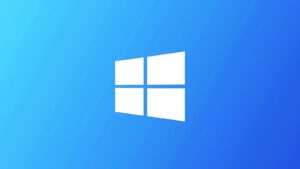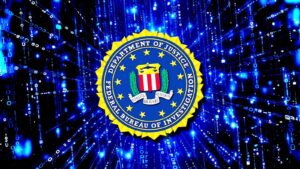For years, patch management has been one of the least glamorous yet most consequential aspects of IT operations. Vulnerabilities emerge daily, and while most administrators know the importance of timely updates, the actual implementation is rarely straightforward.
Between managing complex environments, balancing uptime requirements, and coordinating across distributed endpoints, many organizations end up with blind spots that quietly expand into risk exposure.
The Persistent Challenge of Vulnerability Management
Emerging vulnerability is a problem you just cannot fix, it is an ongoing necessity, and as soon as you have patched everything, there are likely more waiting to be applied. So, patch management is not a task, it is a process. Historically, patch management has depended on a combination of manual tracking, vendor notifications, and legacy tools that were never designed for the scale or diversity of modern IT.
WSUS, SCCM, and other traditional systems offered a foundation for Windows updates but fell short as organizations adopted mixed environments that included remote endpoints, cloud workloads, and third-party applications.
These tools often required on-premises infrastructure, extensive configuration, and constant maintenance. Reporting was limited, remediation cycles were slow, and once updates failed to install, they frequently went unnoticed.
The result was an environment where compliance drifted over time, patches were skipped and never revisited, failed and never validated, or were simply unknown because they existed in a dependency of something else and not understood to be vulnerable. So, vulnerabilities persisted despite good intentions.
Many teams attempted to solve this by enabling automatic updates directly on endpoints. While convenient, this approach introduced its own issues: inconsistent patch states, updates applied without testing, and no centralized insight into which systems had succeeded or failed. Without structured oversight, administrators could not prove compliance or assess true exposure.
Why Visibility and Control Are Central to Effective Remediation
Effective vulnerability management depends on three fundamentals: knowing what needs attention, being able to act on it quickly with proper tooling plus the decision frameworks to prioritize and confirming success. Each of these elements requires visibility and control, which are often fragmented across multiple tools and data sources, worse still, differing opinions on how it should all happen.
Centralized visibility allows IT and security leaders to see the full state of their environment in one place. This includes which endpoints are missing critical patches, which vulnerabilities have been remediated, and where failures have occurred. Centralized control then allows them to take action; approving, scheduling, or enforcing updates, without relying on manual processes or user intervention.
Organizations that achieve this level of insight and coordination tend to maintain shorter remediation timelines, experience fewer repeat vulnerabilities, and demonstrate stronger audit readiness.
Unpatched Windows 10 systems are a threat.
Upgrade all endpoints to Windows 11—even off-network or non-domain devices—with Action1, a scalable, secure cloud-native platform configurable in 5 minutes.
It’s automated patching just works and is always free for the first 200 endpoints.
How Action1 Streamlines Detection, Prioritization, and Oversight
Action1 modernizes vulnerability detection and remediation through a cloud-native platform that connects every endpoint under one console, without VPNs, complex setup, or on-prem infrastructure.
It continuously identifies missing updates for both Microsoft and third-party applications, mapping them to known CVEs and update metadata so administrators know exactly where risk exists.
Updates can then be approved, scheduled or automated, then deployed remotely with granular control, from endpoint detail targeting to defined maintenance windows. Failed installations can be retried automatically, with real-time visibility into individual progress on each endpoint, and results on a per endpoint basis.
Not every patch deserves equal attention on the same timeline. Action1 incorporates intelligence that helps teams prioritize by severity, exploitability, and this allows for faster analysis of business impact. Each vulnerability can drill down to the sources where it is defined, if it is known to be actively exploited, and all the critical details you need to make effective decisions in your own environment.
With policies that allow you to define these decisions as they apply to your operations, critical vulnerabilities can be addressed first while lower-risk updates follow later, fully automated by update rings. This approach ensures resources focus where they deliver the most protection, not just on arbitrary calendar cycles.
Visibility and accountability are built into the process. Reports and compliance dashboards provide proof of remediation for audits, internal governance, and regulatory reviews. Every action, from detection to deployment, is logged and verifiable, removing ambiguity about what was patched, when, and by whom.
Get at a glance enterprise-wide overviews, with all data points being actionable to bring you directly to the area to address the issue it reports.
Centralized enterprise-wide management eliminates the inconsistencies that plague decentralized patching, where individual endpoints update independently. Action1 enforces uniformity across systems and gives administrators control over roll-out strategies, update rings, and timing.
Each update is tracked, validated, and flagged for action. This centralized oversight consistently yields higher patch compliance and shorter remediation times compared to unmanaged or endpoint-driven updates.
By bridging operations and security teams within the same system, Action1 closes a long-standing gap in responsibility. Security gains full visibility into risk and remediation status, while IT retains the operational control to execute safely. The result is a coordinated workflow rather than a handoff between disconnected tools or departments.
Finally, Action1’s analytics turn patch data into operational insight. Trends reveal which devices or departments frequently fail updates and where policies need tightening, creating a feedback loop that continuously improves patching policy, which translates to better policy. Over time, organizations gain not only a higher level of security assurance but a more predictable, measurable process.
Through unified visibility, automated remediation, and intelligent prioritization, Action1 transforms patch management from a reactive maintenance chore into a disciplined, data-driven practice that strengthens both compliance and operational resilience.
It is a simple equation, as vulnerability management and patching get more critical as well as fast paced, you need fast autonomous decision making tools to level that field and put the advantage back in the admins’ hand vs the threat actor.
Action1 is the perfect tool to gain that level of control.
Start free and scale when you’re ready — see how effective patch management can transform your team’s efficiency and security.
Sponsored and written by Action1.







